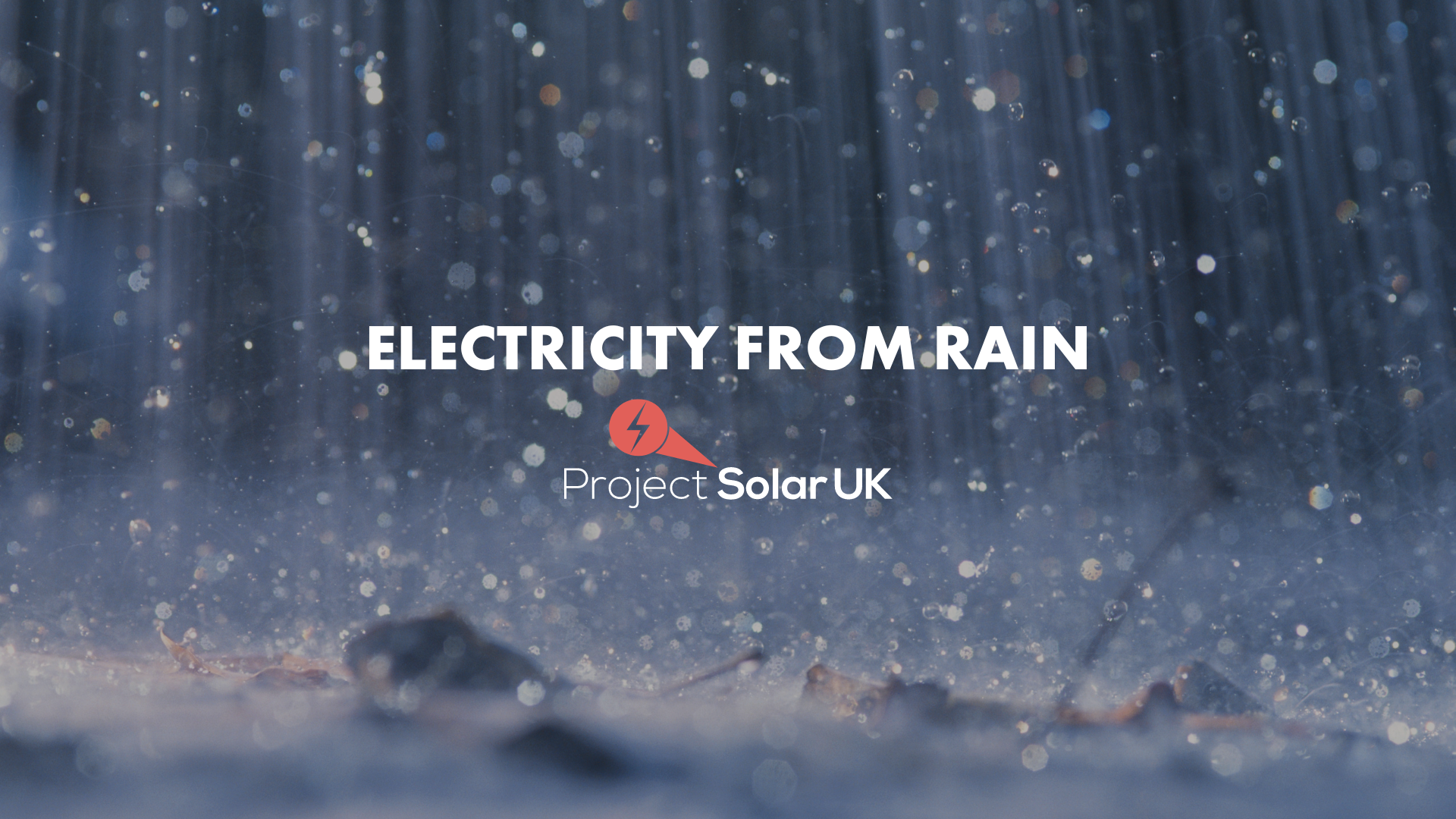
Electricity From Rain – The Latest Solar Panel Technology
The UK sees its fair share of rainfall: 800-1400mm per year, to be exact. But that doesn’t mean you have to wait for sunshine for your solar panels to produce energy.
Recent developments in technology have seen three brilliant innovations come onto the scene. From harnessing electricity from rain to AI-powered robot cleaners, these solutions could turn solar energy into an even more reliable power source.
-
Rain-powered solar panels
Who knew you could make electricity from rain?
Scientists from Soochow University in China investigated new energy harvesting methods to learn about raindrop power generation.
Triboelectric nanogenerators (TENGs) convert daily mechanical energy (friction or motion) into power. The more friction the generators identify, the more energy they create.
The scientists successfully harvested electricity from rain by placing a transparent layer of triboelectric nanogenerators over solar panels.
During the UK’s rainy season, the TENGs would use the friction from raindrops running onto and off the panels to create electricity. Rather than damaging the panels or reducing their efficiency, heavy rainfall would increase the volume of power output.
This boost could lead to more efficient energy generation at night: when rain falls, your solar panels will continue generating power despite a lack of sun.
-
Solar power in the dark
But what if it doesn’t rain at night?
As we know, conventional solar panels use direct and indirect sunlight to generate electricity.
While they may not work as productively on cloudy days, they can still absorb wavelengths that penetrate thick clouds. However, once the sun sets, your solar panels will stop generating power altogether.
If your panels are connected to a battery system, you can continue powering your home with energy already generated. Solar batteries are a reliable, backup energy source that gives homeowners extra peace of mind.
Soon, you could bolster your solar battery with an invention from scientists at Stanford University. Over the past year, they have been experimenting with thermoelectric generators.
Where TENGs create electricity from rain, thermoelectric generators make power from temperature differences. This technology uses lower post-sunset temperatures to boost your panel’s power output.
The team at Stanford University used inexpensive, ‘off the shelf’ materials in their creation and cited how the same cost-effective technology could be easily incorporated into pre-existing solar systems.
Thermoelectric power could be the key to unlocking 24/7 solar systems not just for UK homes and businesses but for the 750 million who do not have nighttime access to electricity.
-
Robot cleaners for solar farms
While we may be closer to creating electricity from rain and heat, what happens when our panels get dirty? The gradual accumulation of moss, sand and dust can impair solar systems if left unchecked.
To keep large-scale, grid-connected power systems, in top condition, they must be regularly maintained. While manual washing services are available for residential panels, solar farms and other large PV systems require greater attention.
So, what preventive measures can be taken to stop debris from fusing with panels? Solar-powered robot cleaners monitored by artificial intelligence now exist.
They can perform their own breakdown-prevention maintenance and are already operational in over 30 large-scale solar projects, including solar farms in India and Chile.
These autonomous cleaners work by night, maintaining solar panels with microfibre cloths and airflow to prevent water wastage. According to the World Economic Forum, these robot cleaners have saved millions of gallons of water already!
The Solar Takeover
While practical implementation may still be in development, each day brings us closer to a solar-powered world.
Breakthroughs happen every year, with solar tech companies working hard to make PV systems more reliable. But that doesn’t mean today’s technology is inefficient: far from it!
Conversion efficiency has improved by 0.5% each year for the last decade. There’s never been a more profitable time to invest in solar, so why not make the switch?
If you’d like to know more about our products and services, contact Project Solar today.



